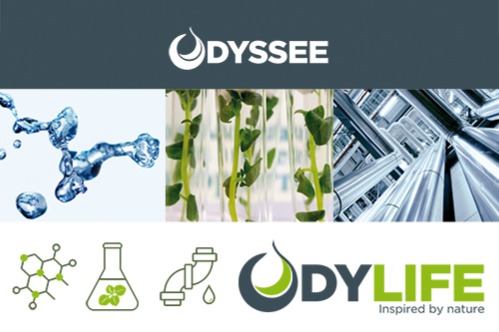News - May 20, 2021
How cleantech solutions can tackle the biodiversity crisis


Written by Expert: Dr. Richard Kipling 4 min read
Saturday 22nd May marks the International Day for Biological Diversity. In this article, Solar Impulse Expert Dr. Richard Kipling explains why tackling the biodiversity crisis is so important, and how clean technologies can be part of the solution to preserve and restore biodiversity.
“We’re part of the solution” – that’s the slogan for this year’s International Day for Biological Diversity, and it couldn’t be clearer in highlighting the role of human ingenuity – represented by green, efficient innovations – in tackling the global biodiversity crisis. What are the threats to biodiversity that innovations might help us overcome, and how might they do it?
First, let’s look at the scale of the problem. We are in the middle of what many scientists are calling the sixth mass extinction of species on planet earth, caused by humans and expected to accelerate as our populations and consumption increase. The biodiversity we are losing underpins the ecosystems services we rely on for survival, making halting the drastic decline in species a major global priority.
In order to work out what to do about this catastrophic loss of biodiversity, we need to understand how we are causing it. The most important drivers of biodiversity loss have been identified as the destruction, fragmentation and disturbance of natural habitats, pollution, the unsustainable extraction and harvesting of natural resources, invasive species introductions, and the growing climate crisis. That’s quite a list, and it stems from the whole range of activities human beings engage in (Figure 1).

As the figure shows, each area of human impact on biodiversity can be expressed as a challenge for innovation, focussing our attention on transforming human activities from being drivers of destruction to being drivers of biodiversity regeneration. Exploring the solutions presented by the Solar Impulse Foundation reveals innovations representing each of the approaches shown in the figure.
When we think of innovations, the most obvious are probably novel products and uses. There are many examples, from novel natural pesticides that are safe for humans and the wider environment, to plant-based, non-harmful alternatives to descaling chemicals. But other approaches to innovation are equally important.
Design innovations include a new free flow hydro-electricity turbine which has been designed to be fish friendly, work silently and cause minimal turbulence, avoiding disturbance to marine life – it aims to minimise construction costs and efficiently provide the renewable energy essential to reducing fossil fuel dependence.
Improving production processes and systems is another approach that can have positive impacts on biodiversity. Innovations that have caught my eye recently include an improved process for the production of bio-char. Bio-char can hold carbon from living material for hundreds to thousands of years and so help to reduce atmospheric CO2. It can also be used for soil improvement and remediation, to enhance urban tree establishment and growth, and for a range of other applications. The production process developed by Carbo Culture produces higher and more consistent quality bio-char that sequesters more carbon and can be produced in modular units, avoiding transportation of bulky materials. Innovative systems may also be completely novel, for example the Coral Vita system for coral reef restoration, which aims to rapidly grow coral while developing understanding of, and planting, the species most resilient to changing ocean conditions.
While much attention has been paid to the use of novel products and systems to address the twin crises of climate change and biodiversity loss, we must ensure that such solutions don’t become part of the problem. Recently, top scientists have tried to redress the misuse of the concept of nature based solutions, emphasizing that they relate to a diversity of natural systems, not just forests, that they cannot be used as an excuse to avoid moving away from fossil fuels, that they must provide tangible benefits for biodiversity, and that they must be put in place with the support of the communities they affect, respecting and involving them.
These requirements highlight the fact that, in order to help humanity move towards a sustainable future, novel products, uses and designs need to be carefully monitored and thoughtfully implemented. Therefore, innovation in monitoring and services, as well as in products and processes, are an essential part of change.
Monitoring quantifies human impacts on biodiversity, providing vital information to those seeking to effectively reduce them, including highlighting the benefits and potential trade-offs associated with innovation. New high tech, plug and play monitoring innovations such as Seamonitor can make such surveying cheaper, easier and more environmentally friendly, while the fast acquisition of data can increase production efficiency and reduce impacts – the Fallow weed detector for example helps farmers greatly reduce their use of chemicals by guiding applications within fields.
Knowing what is happening via innovative monitoring is one thing, making a change is often far more difficult. Innovative services can enable and empower companies and individuals to reduce their environmental impacts while at the same time improving the economic sustainability of their businesses. Companies like ECOTIERRA are finding new ways to support more sustainable production systems around the world, offering new types of holistic services to producers. These services include cheap microcredit to fund improved infrastructure and facilities, and the provision of technical support to shift towards more sustainable practices, for example using agroforestry to repair and avoid environmental degradation. Such services, empowering local producers to improve their environmental and economic performance, are hugely important in embedding change, addressing social issues as well as supporting biodiversity.
As we have seen, innovative products can play an essential role in halting the destruction of biodiversity and replenishing our natural systems. Plenty of exciting new products and designs are being showcased through the work of the Solar Impulse Foundation. It is vital that these are matched by innovation in novel and improved services and monitoring. This can ensure that change is implemented in ways that do not add to inequality, exclusion, and injustice but instead – as the slogan goes – truly make local communities ‘part of the solution’. That’s an important challenge to focus on as we celebrate the International Day for Biological Diversity on 22nd May.

Written by Expert: Dr. Richard Kipling on May 20, 2021











